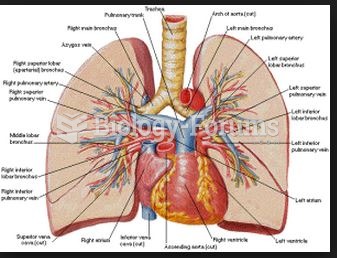|
|
|
People with high total cholesterol have about two times the risk for heart disease as people with ideal levels.
Once thought to have neurofibromatosis, Joseph Merrick (also known as "the elephant man") is now, in retrospect, thought by clinical experts to have had Proteus syndrome. This endocrine disease causes continued and abnormal growth of the bones, muscles, skin, and so on and can become completely debilitating with severe deformities occurring anywhere on the body.
The average human gut is home to perhaps 500 to 1,000 different species of bacteria.
Throughout history, plants containing cardiac steroids have been used as heart drugs and as poisons (e.g., in arrows used in combat), emetics, and diuretics.
More than 34,000 trademarked medication names and more than 10,000 generic medication names are in use in the United States.







